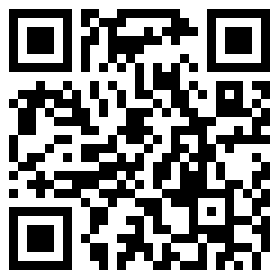Enterprises are rapidly investing in the Internet of Things, and innovation is being carried out in all walks of life. Some brands have launched their own smart delivery, wearable devices and health monitoring devices. On a larger scale, companies are using IoT applications to gain logistics and supply chain advantages over their competitors. This has spawned an emerging industry with the Internet of Things as the core platform.
It is important to have a strategic overview of the IoT market. When companies use the Internet of Things from a strategic perspective, companies can create tremendous value. This is the difference between market leaders and industry leaders. They understand the scope of the Internet of Things and how it affects the overall business model.
It is said that the global Internet of Things will double in the next few years, reaching $520 billion by 2021. Researchers estimate that data centers and analytics will be the fastest growing areas, with CAGR growth rates of more than 50%. The rise of IoT applications can be attributed to the use cases available for IoT applications. From home automation to workflow optimization, the Internet of Things has a comprehensive advantage beyond geography. What are the ways to take advantage of IoT applications to stay ahead of the competition? While experts may complicate the field, there are three simple ways to use IoT applications that deliver a positive return on investment.

I. Integrate the Internet of Things with current business processes
While cloud computing is ubiquitous and offers a comprehensive large-scale advantage, there is still a need to strengthen integration. It is said that more than 50 billion devices will be available next year, and all devices need to be integrated at the core technology level. Managers need to understand how IoT applications can be better integrated into the system for greater competitive advantage.
In the financial sector, the Internet of Things can be used for better asset maintenance and reporting. This helps to alleviate most of the pressure cycle asset valuation and life expectancy. Companies can also gain influence by creating an IoT-based payment mechanism for stakeholders. Employees can use wristbands and ID cards for a more streamlined payment function, and customers can use the chip to trade. This is especially beneficial if your business is in the field of activity or if there are a large number of employees working globally. It helps to simplify everything into one system.
For logistics companies, companies can demand better control over shipping and tracking. They can assign a single IoT device to a higher value fleet or package. They can then track real-time data transmitted over Wi-Fi or cellular networks. This gives you more control over the process and gives you a bigger edge in the competition. Logistics and supply chain space is dominated by companies that regularly use IoT devices.
Second, focus on automation through the Internet of Things
The Internet of Things is a powerful tool for creating new growth paths through automation. Automation is a key component of any successful business that wants to increase its competitive advantage in the marketplace. The Internet of Things can also provide a new foundation in terms of automation capabilities. In other words, the Internet of Things can spawn secondary applications that can take advantage of AI and machine learning technologies. This adds to the new level of IoT success, which is critical for competitive advantage collection.
One of the most important impacts of the Internet of Things is to reduce operating costs. This means that automation not only improves efficiency, but also reduces overall costs. Reducing costs is directly passed on to customers, which will lead to greater market share over time. Efforts to automate through the Internet of Things have created long-term business value for all participants in the market. In terms of scale, the company is able to provide greater value for stakeholder engagement. This has a long-term impact on companies operating in a highly competitive environment.
The Internet of Things can also increase the efficiency of automation systems. From a technical point of view, the Internet of Things allows all machines to be connected under one overall system. In the healthcare sector, this means rapid prototyping and large-scale testing of larger patient groups. In the area of infrastructure, this includes creating higher-volume products that are better integrated internally. The overall impact of the Internet of Things is enormous compared to how automation can transform the global economy.
Third, develop a safer IoT ecosystem
The biggest challenge facing the Internet of Things industry today is in the field of network security. Companies are struggling to make their systems more secure, while expanding cross-regional operations to ensure the safety of the entire ecosystem is critical. This is done through effective handwriting testing and real-time analysis so you can receive the right information. You get the right insights when you connect to all the currently running IoT devices and applications.
Connection gateways, databases and endpoint sensors should be protected against common threats, including ransomware and password hijacking. IoT applications need to be more secure so that you get the most value out of your operations. The increase in network security has also made the overall IoT product more competitive in the market. Companies that put more resources into cybersecurity are considered more conducive to long-term cooperation.
Developing a more secure IoT ecosystem also ensures that future application additions are seamless. There are no barriers to adding new features and updating them completely. A secure IoT application is a key asset and should be well maintained over time. This is why it is important to develop a safer IoT ecosystem.
Key areas such as data processing, storage, and management should also be more secure. This can be achieved by hiring critical resources or outsourcing security to the company. Policymakers can also strengthen their development framework by enhancing their device management and network management capabilities. There should be a holistic approach to IoT application development and security to ensure effective utility and competitive advantage.






